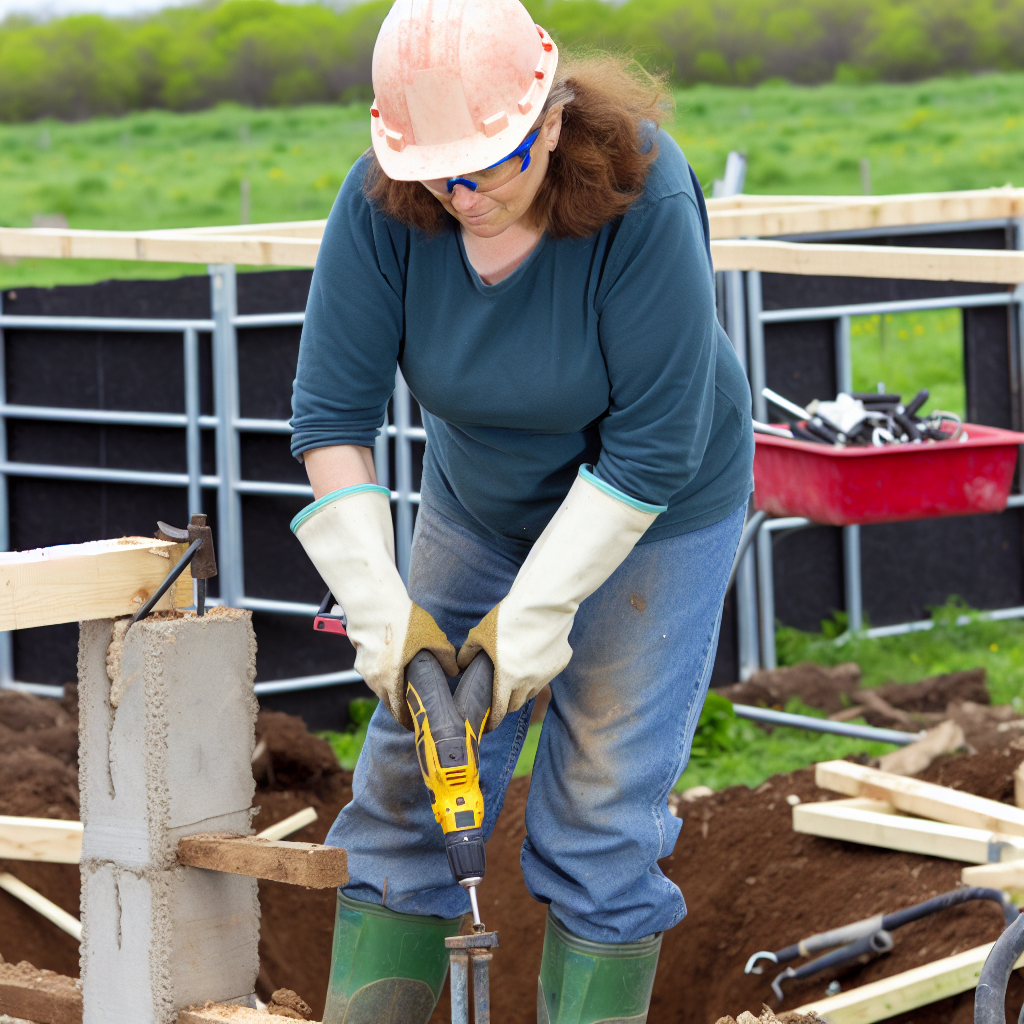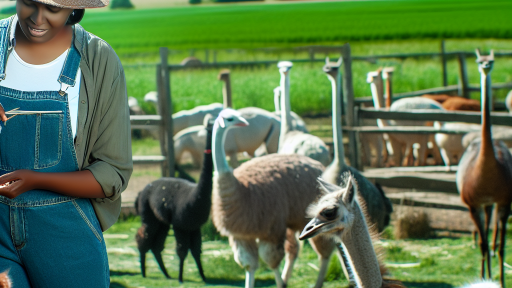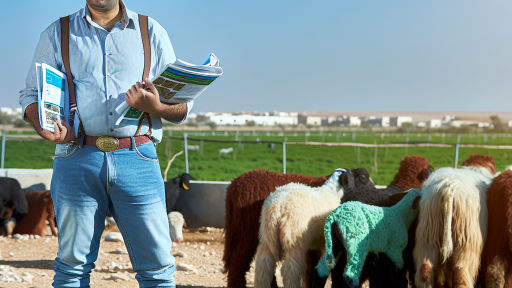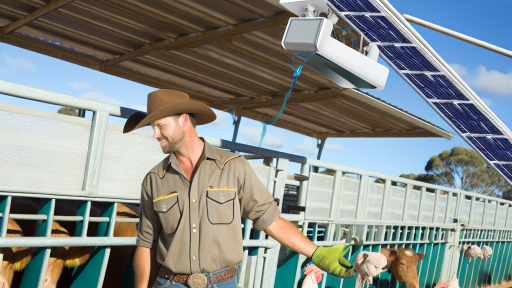Understanding the Importance of Durable Livestock Housing
Protection from Environmental Factors
Durable livestock housing protects animals from harsh weather conditions.
It helps maintain a stable climate for livestock comfort.
Additionally, robust structures minimize the risk of disease spread.
For example, proper ventilation limits moisture accumulation.
Enhancing Animal Welfare
Quality housing promotes the well-being of livestock.
Animals thrive in clean, safe, and comfortable environments.
Also, good design helps reduce stress among livestock.
This leads to improved growth rates and overall productivity.
Economic Benefits
Investing in durable housing can lower long-term costs.
It reduces the need for frequent repairs and replacements.
Moreover, providing proper shelter can enhance productivity.
Healthy animals generate better yields in milk and meat production.
Compliance with Regulations
Durable housing meets animal welfare regulations more effectively.
It ensures adherence to local and national standards.
Compliance helps avoid fines and legal issues for farmers.
Transform Your Agribusiness
Unlock your farm's potential with expert advice tailored to your needs. Get actionable steps that drive real results.
Get StartedTherefore, investing in robust livestock structures pays off in the long run.
Factors to Consider When Designing Livestock Housing
Understanding Animal Needs
Each type of livestock has unique requirements.
Understanding these needs is essential for optimal design.
For example, cows require sufficient space to move and lie down.
In contrast, poultry need facilities that accommodate their social behaviors.
Climate Considerations
The climate significantly impacts livestock housing design.
You must consider temperature extremes and humidity levels.
Proper ventilation is crucial for maintaining air quality.
Insulation also helps protect animals from harsh weather conditions.
Materials and Construction
Selecting durable building materials is vital for longevity.
Common materials include wood, metal, and concrete.
Each material has its advantages and disadvantages.
Choose materials that withstand local environmental factors.
Accessibility
Design should prioritize accessibility for both animals and workers.
Wide doors and ramps facilitate easy movement of livestock.
Access to feeding and watering systems must be efficient.
This minimizes stress for both animals and laborers.
Health and Sanitation
A hygienic environment promotes animal health and productivity.
Include features that make cleaning and disinfecting easier.
Sloped floors can improve drainage and prevent stagnant water.
Additionally, consider materials resistant to moisture and mold.
Cost and Budget
Budget constraints influence housing design choices.
Consider both initial construction and long-term maintenance costs.
Investing in quality materials may reduce future expenses.
Showcase Your Farming Business
Publish your professional farming services profile on our blog for a one-time fee of $200 and reach a dedicated audience of farmers and agribusiness owners.
Publish Your ProfileEvaluate ongoing operational costs when designing facilities.
Compliance with Regulations
Familiarize yourself with local zoning laws and regulations.
Ensure your design meets all legal and safety standards.
Compliance can prevent future legal issues and fines.
Furthermore, adhering to regulations promotes animal welfare.
Materials Selection for Long-lasting Structures
Understanding Material Durability
Durable materials are essential for livestock housing structures.
These materials withstand harsh weather and heavy use.
Choosing the right materials will extend the life of the building.
Commonly Used Materials
Wood is a popular choice due to its natural insulating properties.
Steel offers strength and resistance to pests and decay.
Concrete provides durability and requires minimal maintenance.
Each material has distinct advantages and disadvantages.
Evaluating Environmental Impact
It is important to consider the environmental footprint of materials.
Using sustainable resources minimizes ecological harm.
Recycled materials can be both cost-effective and environmentally friendly.
Choosing the Right Materials for Climate
Climate plays a crucial role in materials selection.
In humid areas, materials resistant to mold and rot are necessary.
In colder regions, proper insulation helps maintain temperature control.
Understanding local weather patterns informs better material choices.
Budget Considerations
Cost is a key factor in material selection.
High-quality materials may have a higher upfront cost.
However, they often result in long-term savings through reduced maintenance.
It is wise to weigh initial costs against long-term benefits.
Local Sourcing and Availability
Local materials can reduce transportation costs.
Using materials from nearby suppliers supports the local economy.
Additionally, locally sourced materials can have a smaller carbon footprint.
Learn More: Sheep Shearing Best Practices for Farmers
Construction Techniques for Enhanced Durability
Choosing Quality Materials
Quality materials significantly improve the lifespan of livestock housing structures.
For instance, pressure-treated wood resists rot and insect damage effectively.
Metal framing provides durability against harsh weather and pests.
Additionally, high-quality insulation materials promote energy efficiency.
Implementing Strong Foundations
A strong foundation is essential for any livestock housing structure.
Concrete slabs prevent moisture damage and deter rodents.
Moreover, proper drainage systems safeguard against water pooling near structures.
Designing for Natural Ventilation
Natural ventilation enhances airflow within livestock housing.
This design reduces humidity levels and improves animal health.
Strategically placed windows and vents allow effective cross-ventilation.
Furthermore, roofs with overhangs can minimize direct sunlight exposure.
Utilizing Modern Technologies
Modern technologies can greatly enhance livestock housing durability.
For example, smart sensors monitor temperature and humidity levels.
Showcase Your Farming Business
Publish your professional farming services profile on our blog for a one-time fee of $200 and reach a dedicated audience of farmers and agribusiness owners.
Publish Your ProfileThis data allows farmers to make timely adjustments to the environment.
Moreover, automated feeding and watering systems can improve efficiency.
Regular Maintenance Practices
Regular maintenance is crucial for ensuring the durability of livestock housing.
Routine inspections help identify potential issues before they escalate.
Additionally, promptly addressing repairs maintains structural integrity.
Farmers should create a maintenance schedule to keep housing in optimal condition.
Delve into the Subject: Scaling Your Fish Farm: From Small Start to Large Operation
Ventilation Systems to Promote Animal Welfare
Importance of Proper Ventilation
Proper ventilation is crucial in livestock housing.
It enhances animal comfort and overall health.
Furthermore, it helps prevent respiratory diseases.
Effective airflow reduces humidity and odors.
As a result, animals can thrive in a healthier environment.
Types of Ventilation Systems
There are two primary types of ventilation systems.
These are natural ventilation and mechanical ventilation.
Natural Ventilation
Natural ventilation relies on airflow caused by wind and temperature differences.
It minimizes energy costs for livestock housing.
However, its effectiveness depends on building design and location.
Properly placed openings can optimize airflow.
Mechanical Ventilation
Mechanical ventilation uses fans to circulate air.
This method enables precise control over airflow conditions.
It is beneficial in situations with limited natural airflow.
Additionally, it allows for temperature regulation during extreme weather conditions.
Design Considerations for Ventilation
Designing a ventilated system requires careful planning.
Consideration should include animal needs, building size, and climate.
Furthermore, ensure easy access for maintenance and operation.
Fan Placement and Sizing
Placement of fans directly impacts airflow efficiency.
Fans should circulate air throughout the entire building.
Size the fans based on the volume of the space.
Air Inlets and Outlets
Strategic placement of air inlets and outlets is essential.
These should be placed high and low in the building.
This position facilitates effective air exchange.
Monitoring Air Quality
Monitoring systems can track temperature and humidity levels.
Regular assessments ensure optimal ventilation performance.
Additionally, they help identify potential issues early.
Using Sensors for Immediate Feedback
Automated sensors provide real-time data on environmental conditions.
These systems can adjust ventilation automatically based on measurements.
Consequently, animals experience consistent and optimal conditions.
Regular Maintenance for Efficiency
Routine maintenance is crucial for any ventilation system.
Regular inspections keep systems running smoothly.
Additionally, maintenance helps extend the lifespan of equipment.
Showcase Your Farming Business
Publish your professional farming services profile on our blog for a one-time fee of $200 and reach a dedicated audience of farmers and agribusiness owners.
Publish Your ProfileExplore Further: Benefits Of Proper Livestock Waste Management

Insulation and Energy Efficiency in Livestock Housing
The Importance of Insulation
Insulation plays a critical role in livestock housing.
It moderates temperature fluctuations throughout the year.
Effective insulation enhances animal comfort and health.
Moreover, it reduces energy costs for heating and cooling.
Investing in quality insulation pays off in the long run.
Types of Insulation Materials
Several insulation materials are suitable for livestock housing.
Fiberglass is a common choice for its affordability and effectiveness.
Foam boards provide excellent insulation and moisture control.
Spray foam offers a seamless application, preventing air leaks.
Additionally, cellulose insulation is eco-friendly and efficient.
Design Considerations for Energy Efficiency
Effective design enhances overall energy efficiency in livestock housing.
Orientation of the building optimizes natural light and warmth.
Incorporating windows increases sunlight exposure during the day.
Proper ventilation systems ensure good air quality and temperature control.
These elements work together to create a stable environment for livestock.
Implementing Renewable Energy Sources
Integrating renewable energy sources further boosts energy efficiency.
Solar panels provide clean energy for heating and cooling needs.
Wind turbines can also supplement energy requirements satisfactorily.
Using geothermal systems leverages stable ground temperatures effectively.
These technologies reduce reliance on non-renewable energy sources.
Monitoring and Maintenance
Regular monitoring ensures insulation remains effective over time.
Check for any signs of damage or wear periodically.
Proper maintenance preserves energy efficiency throughout the year.
Additionally, consider seasonal adjustments to heating and cooling systems.
These practices help maintain optimal conditions for livestock.
Discover More: Emergency Procedures in Livestock Transportation
Planning for Disaster Resistance in Livestock Structures
Assessing Potential Hazards
Begin by identifying potential hazards that may affect livestock buildings.
Consider natural disasters such as floods, hurricanes, and earthquakes.
Additionally, assess risks from fires, pests, and diseases.
This thorough assessment provides a foundation for planning disaster-resistant structures.
Designing Durable Structures
Focus on using high-quality materials for livestock housing.
Materials should withstand extreme weather and pests while ensuring animal comfort.
Incorporate design principles that enhance structural integrity.
Utilize reinforced concrete or steel frames for added strength.
Location and Site Considerations
Choose a location that minimizes exposure to potential hazards.
Avoid flood-prone areas and those with a history of landslides.
Your site selection should include proper drainage and ventilation systems.
Incorporating natural windbreaks can also protect against harsh winds.
Emergency Preparedness Plans
Develop comprehensive emergency plans for your livestock operation.
Showcase Your Farming Business
Publish your professional farming services profile on our blog for a one-time fee of $200 and reach a dedicated audience of farmers and agribusiness owners.
Publish Your ProfileEnsure all staff are trained in emergency response protocols.
Regularly practice drills to prepare for various disaster scenarios.
Include evacuation routes and shelter locations in your plan.
Investing in Insurance and Resources
Invest in insurance that covers livestock structures against various risks.
Review policy coverage regularly to ensure adequate protection.
Consider additional resources such as backup generators for power outages.
Having financial and physical resources can improve resilience during emergencies.
Maintenance Strategies for Prolonging Lifespan of Housing
Regular Inspections
Conduct regular inspections to identify issues early.
Look for signs of wear and tear in structures.
Tighten any loose bolts and screws during inspections.
Check for leaks in roofs and walls consistently.
Inspect the integrity of the flooring regularly.
Cleaning and Sanitizing
Keep the housing clean to prevent disease spread.
Remove manure and waste daily to maintain hygiene.
Use proper cleaning agents for thorough disinfection.
Ensure all tools used are sterilized after each use.
Schedule deep cleanings periodically to refresh the space.
Structural Repairs
Address any damage to the structure immediately.
Replace rotting wood or damaged insulation as needed.
Perform regular upkeep on doors and windows to ensure they function correctly.
Seal cracks in the walls to protect against pests and weather.
Monitor and repair fencing to keep livestock secure.
Weatherproofing
Weatherproof all structures to withstand harsh conditions.
Apply weather-resistant coatings to roofs and walls.
Install insulation to maintain temperature regulation.
Ensure proper drainage systems to prevent flooding.
Examine and repair any damage from weather events quickly.
Utilizing Quality Materials
Invest in high-quality materials for long-term durability.
Select weather-resistant and long-lasting building materials.
Consider using non-toxic alternatives for finishings.
Prioritize structural integrity over initial cost savings.
Maintain relationships with reliable suppliers for best products.
Additional Resources
The Transformation of U.S. Livestock Agriculture: Scale, Efficiency …




